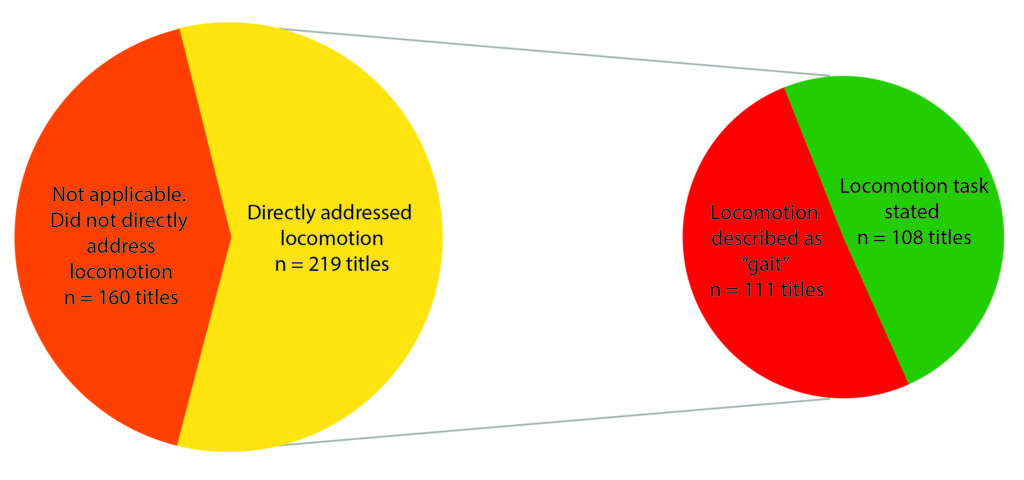By Dr Matthew King
Investigations of biomechanics are an ever-growing field of scientific research, with the assessment of “gait” being a popular choice to inform both clinical and experimental directions. However, what cannot be gleaned from the term “gait” is the type of locomotion that is being studied. Are the participants walking, running, crawling or jogging?
Initially, the study of human movement was so novel, that the term “gait” may have been all-encompassing. Over time, the term “gait” has been substituted to describe walking. However, “gait” is not mutually exclusive to walking, nor humans. Horses gallop and trot, fish swim, and humans run (just to name a few). What is not know is the task (or type of locomotion) being performed – as “gait” is the pattern produced during a mode of locomotion, not locomotion itself.
To demonstrate the ambiguous use of the term “gait”, our recent publication reviewed the 319 papers published in Gait and Posture in 2019. In summary, approximately half of the papers that directly evaluated locomotion described the task as “gait” in the title with no quantifier (noun, verb, or gerund) for the actual task being performed (FIG).
Our primary goal for completing this paper and outlining this information, is to shed light on various, and often incorrect, use of the word “gait”. Together, as clinicians, academics, and scientists alike, we must rise to the challenge in being more literal in what we study and why. In particular with the use of the word “gait”. In doing so, search strategies will be streamlined, titles will provide insight into the task studied, and the ability for individuals to locate relevant research studies to further their evidence-based practice will be simplified.

Figure. Use of the word “gait” in the titles of papers published in Gait and Posture in 2019
Publication
Gill, N., Kean, C., & King, M. G. (2020). Let’s take the dog for a gait…. Gait & Posture, 79, pp. 1-2. doi: https://doi.org/10.1016/j.gaitpost.2020.03.018
About the Author

Matthew King
La Trobe Sport and Exercise Medicine Research Centre
Dr Matthew King is a Physiotherapist, and Postdoctoral Research Fellow at the La Trobe University Sport and Exercise Medicine Research Centre. His research interests include musculoskeletal conditions, osteoarthritis and orthopaedics, with a particular focus on the hip joint and lower limb biomechanics.
Copyright
© 2020 by the author. Except as otherwise noted, the ISPGR blog, including its text and figures, is licensed under a Creative Commons Attribution-ShareAlike 4.0 International License. To view a copy of this license, visit https://creativecommons.org/licenses/by-sa/4.0/legalcode.
ISPGR blog (ISSN 2561-4703)
Are you interested in writing a blog post for the ISPGR website? If so, please email the ISGPR Secretariat with the following information:
- First and Last Name
- Institution/Affiliation
- Paper you will be referencing

